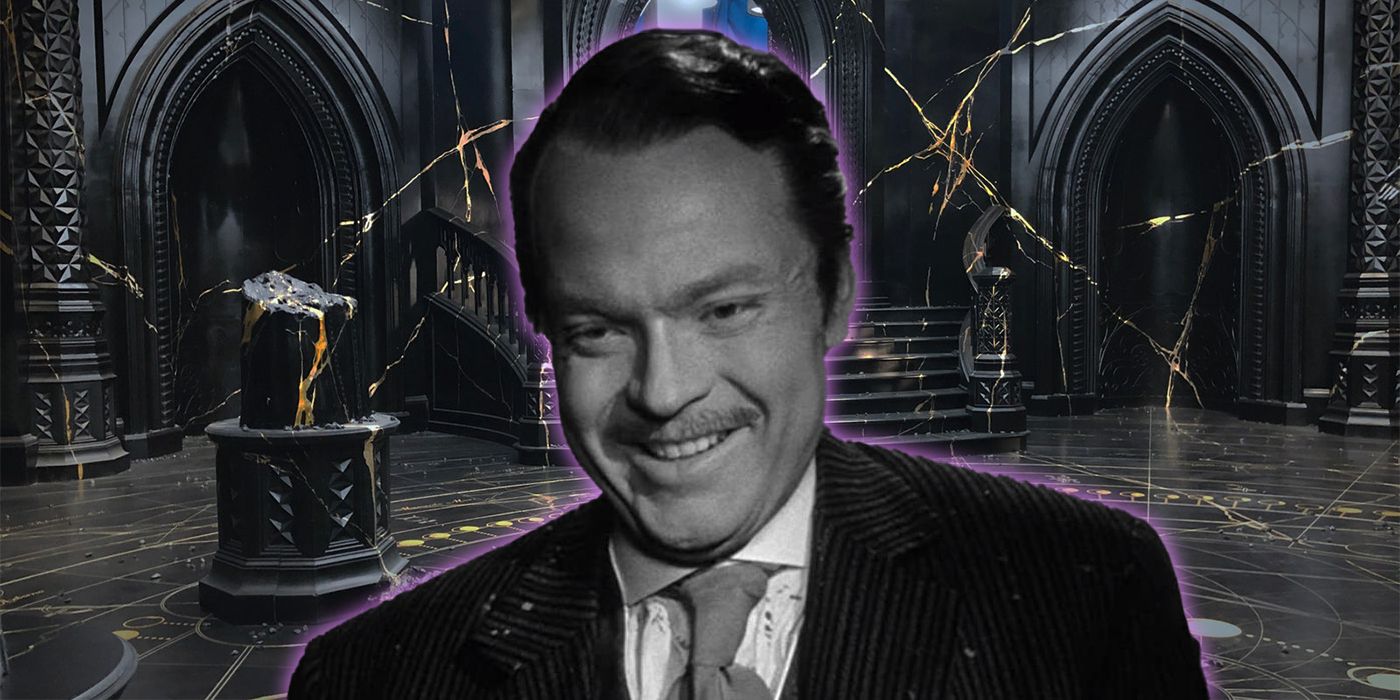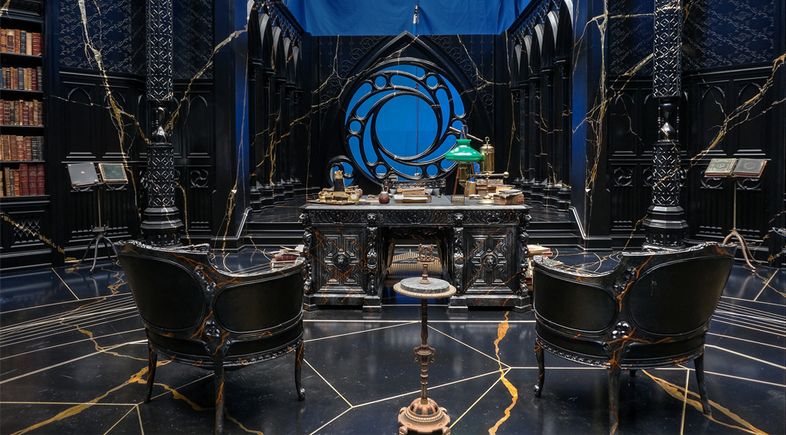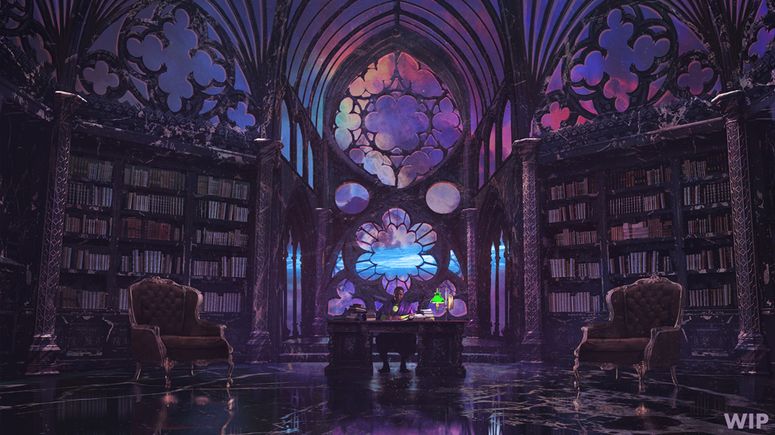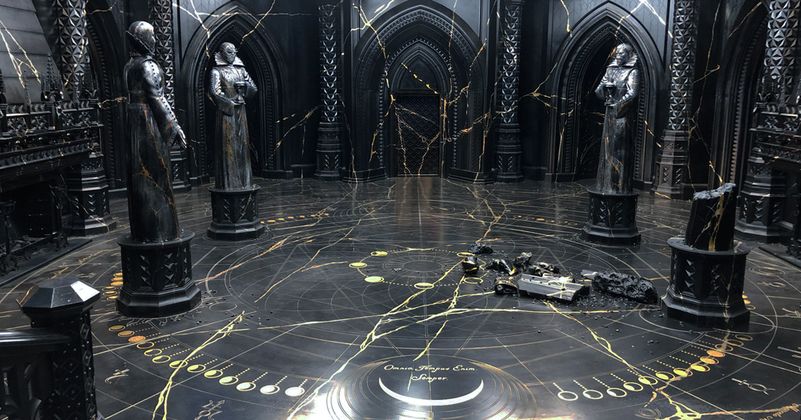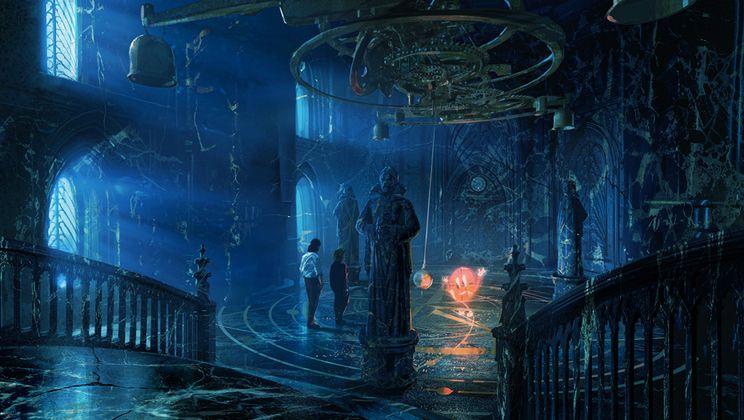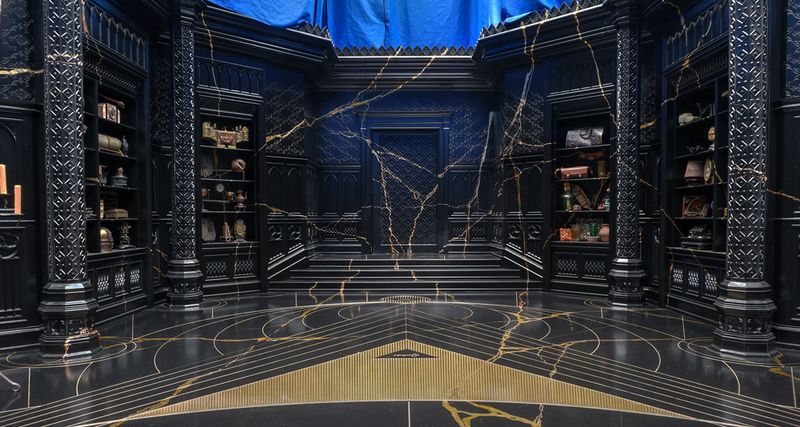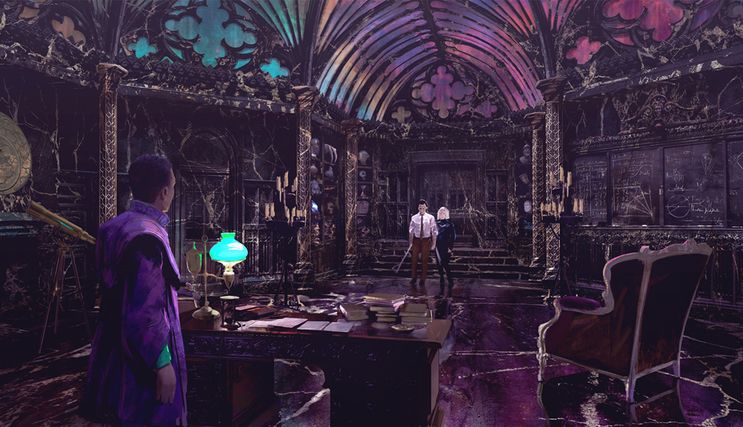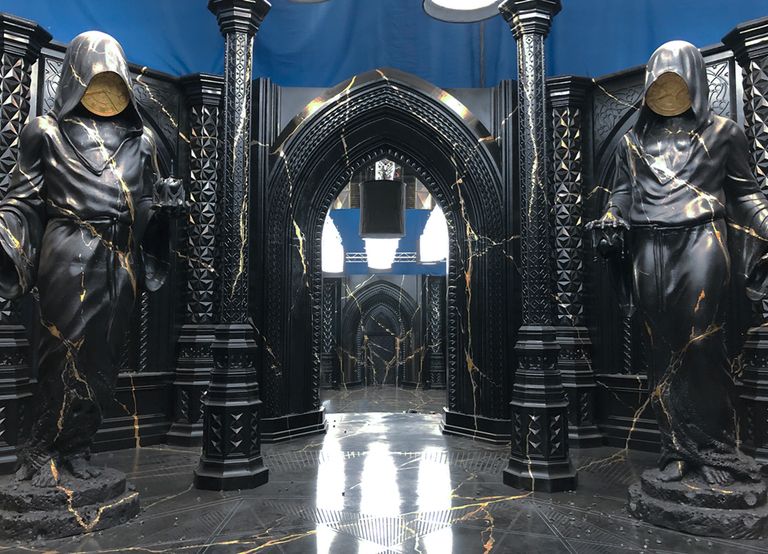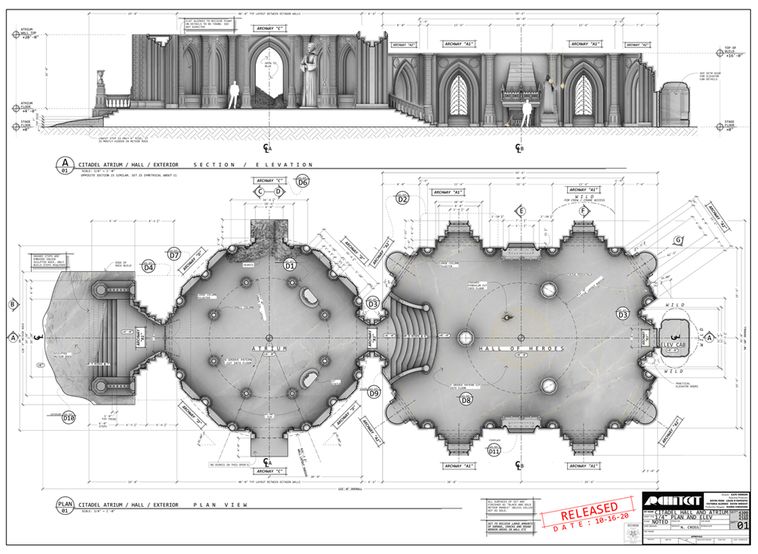When it came to designing the Citadel at the End of Time for Loki's finale, production designer Kasra Farahani looked to another famous recluse for inspiration.
Farahani spoke to Vanity Fair about the massive castle that houses the show's mysterious big bad and how it revealed his mindset and history. "I believe He Who Remains built it," Farahani said of the Citadel. "The biggest influence was probably Xanadu from Citizen Kane, and Hearst Castle [the real-life inspiration for Xanadu] as a result. This eccentric person rattling around this big Citadel.
The designer went on to explain why He Who Remains' office is so pristine while the rest of his abode is in disrepair. "I pitched this idea that he’d retreated to the office at the time. The atrium, [where] you see the 13-foot-tall Sentinels of Time statues and the hall with the giant timepiece and the Timekeeper statues… there would be a sense that he had retreated from these places and they’re in disrepair," Farahani said. "In terms of architectural style, we also took inspiration from Hearst Castle, [which] is this composite of different pieces of European architecture. We wanted the sense that [He Who Remains] had architecturally cherry-picked from assorted grand architectural styles. Some stuff, like the tessellated surfacing on some of the columns, is more unknowable and fantasy, to create this atmosphere of a self-edifying and grandiose space that is almost a project he got bored with."
The interview also comes with a new batch of concept art from the hit Disney+ show that better highlights the massive fortress. Check it out:
"We came up with the idea of doing something inspired by Petra in Jordan—so this notion that the architecture was carved in situ from the asteroid itself as opposed to being erected by bringing in different building materials," Farahani said. "Everything was going to be literally hewn from the asteroid itself. This is kind of a big commitment, looks-wise, because in order for it to work, there couldn’t be [anything else] brought it. It would have been strange to have the architecture carved from this asteroid—which we pitched as black with a gold vein of an unknowable element moving through it—and then bring in wood and carpets and painting. It’s such a flamboyant choice to carve the whole building out of this stuff, and the style, being inspired by Gothic revival, was going to be flashy. So we needed to commit to this idea that there are no other finishes in there."
The season finale of Loki is now streaming on Disney+.
Source: Vanity Fair

